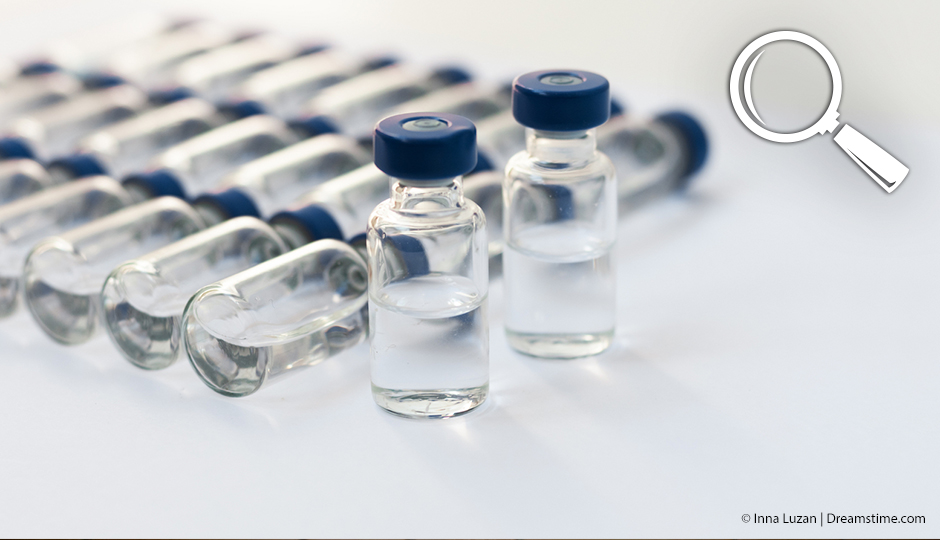Auteur : Agence Science Presse - Catherine Crépeau
Since the beginning of the pandemic, we’ve heard that a vaccine could be available in 12 to 18 months. The most optimistic predictions even talk about a six-month period – by this fall. But the fact a vaccine is “ready” isn’t the end of the story, the Rumour Detector finds.
4 facts to remember:
- First, the right formula must be found.
- This formula must be tested.
- The vaccine must be produced on a very large scale.
- Some steps can be short-circuited, but this takes time.
1) First, find the right formula
Pharmaceutical manufacturers, biotechnology innovators and other university labs are competing to develop an anti-COVID-19 vaccine. On May 15, the World Health Organization (WHO) identified 110 vaccines in development. Eight are in the clinical trial phase. The London School of Hygiene & Tropical Medicine counted 169 vaccine projects, 12 in the trial phase.
The multiplication of projects and approaches is good news. But it doesn’t guarantee that an effective vaccine will be found. Traditionally, only a small minority of experimental vaccines and drugs end up on the market.
Also, reaching this goal within the year would be unprecedented. Historically, the mumps vaccine was developed the fastest. It took four years from collection of viral samples to approval in 1967. In 2015, a speed record was set during the Zika epidemic. It took seven months to develop an acceptable candidate vaccine to move on to clinical trials. But these trials were never held, because the epidemic faded away on its own.
2) Then test the formula
Candidates for a possible vaccine are first tested on human cells, and then on animals. If their efficacy and safety are encouraging, they proceed to human clinical trials. These trials are conducted in three phases, involving bigger and bigger groups of volunteers. They evaluate the vaccine’s safety, the dose offering the best immune response, its side effects and then its efficacy. They generally take 4 to 8 years. In the case of SARS-CoV-2, the current trials should be completed before the end of the year. They may even take until spring or summer 2021. Then more time must be allowed for safety checks and approval by each country’s authorities.
It’s still possible to skip steps. For example, vaccine manufacturers could be allowed to waive certain animal studies or conduct them parallel to the first human trials. Some experts propose infecting vaccinated volunteers. This type of trial gives the quickest answers to a number of questions. But it involves ethical issues. Nonetheless, over 24,000 people in 102 countries signed an online petition to volunteer.
3) Finally, produce it
Designing a vaccine in record time is one thing. But it must also be possible to manufacture and distribute billions of doses. They must be specially packaged and transported at temperatures below 0°C, all over the world.
In theory, the existing plants could certainly produce hundreds of millions of doses by the end of the year, if the formula were established. Several labs and pharmaceutical companies have announced they are ready to produce these million of doses. That’s even though their vaccine hasn’t been proved effective yet.
But almost everyone on the planet must be vaccinated. The existing facilities are likely to be inadequate. Especially since they must continue manufacturing vaccines against the flu, measles, mumps and other infections. Also, compulsory distancing in the plants has already reduced production capacity.
New plants could be necessary, so delays would be inevitable.
The necessary production facilities will also depend on the type of vaccine that will work the best. If the vaccine is manufactured from the virus or a protein of the virus, it should be easier to estimate the necessary time. That’s because the industrial technology has existed since the 1950s. However, it takes time. For example, the flu vaccine is produced by cultivating the virus in millions of chicken eggs. Each cycle takes several months.
It should be faster to manufacture an RNA or DNA vaccine, because the process is standardized. The virus’s basic genetic material is injected into human cells to build the necessary protein. It might also be necessary to cultivate it in vats of cells or in plants, such as tobacco seedlings. However, these types of vaccines have never been tested on a large scale.
For a gene-based vaccine, a non-pathogenic virus is used (one that doesn’t cause disease). Production is slower, because it involves cultural animal cells. However, it benefits from standardized industrial processes. This makes it easier to produce large quantities.
Risks of shortage
Other factors in the process can create bottlenecks. Vaccines that are composed of a SARS-CoV-2 protein, or a fragment of one, often need an adjuvant. This is a molecule added to stimulate the immune response. These adjuvants could require ingredients that are likely to become scarce.
Distribution could also be slowed by a shortage of medical glass, used to manufacture vaccine vials. This shortage has already hit the United States. The caps of these vials are only manufactured by a handful of companies. This increases the risk they will run out of stock.
$2 billion for a vaccine
The development of a vaccine requires plenty of money. At least 2 billion US dollars, according to the Coalition for Epidemic Preparedness Innovations (CEPI). The CEPI is an international coalition that finances the development of vaccines against epidemics. This estimate includes the development of three candidate vaccines and enhancing manufacturing capacity. It excludes the costs of manufacture and delivery .
Various national governments have promised $690 million of this amount to the CEPI. The US Government has given it nearly a billion dollars to support the development of experimental vaccines by Moderna Therapeutics and Johnson & Johnson. On May 21, the White House announced a $1.2 billion dollar grant for a vaccine in development at AstraZeneca. It specified that the “delivery” of the first vaccines should happen in October. This very unlikely deadline takes us to one month before the November presidential election.
Verdict
Vaccines to prevent the COVID-19 infection are being developed at unprecedented speeds. But it’s unrealistic for some vaccines to be available by fall. Even if a vaccine turned out to be hyper-effective in the current Phase 1 or 2 clinical trials, it would still take several months before large-scale production and the start of a vaccination campaign.





